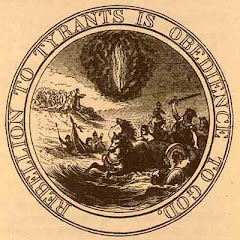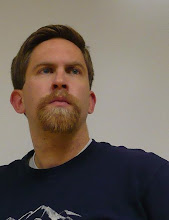A friend of mine who has previously worked as a professional surveyor has offered to come help me lay out the garden plots in my back yard. He has educated me a great deal about lines, borders, and marks, and although the scale of my yard is not big enough that it will make a great deal, I am aware consciously of the errors in my landscaping, and I would rather find a more perfect way.
When I ripped out my yard, I did so because the previous owner did right things for the wrong reasons or the wrong way. The old walkway out back was at an angle, such that it looked and felt wrong and dissuaded me from spending any time out back. Thinking that I was good enough to do it myself, I worked all day with a friend to set up forms for new concrete walkways and a concrete staircase. After all that work, it is within 0.25" of tolerance and within 25% of the appropriate slope. That's pretty good for a biochemist.
However, sometimes it's not good enough. If you look at an aerial map or street map of Las Vegas, you will see even if you don't register that the city was laid out originally with an error of two degrees. At Charleston BLVD, all the north-south arterials suddenly jog into their corrected lines because they were not laid out correctly. I find it fascinating to think that the original land surveyors, 150 years ago, walked across the desert floor, hiked up mountains, and tried their best to set markers, especially when I see people today taking shortcuts. Out in Summerlin, it's even worse, because few of the streets are straight. Fascinated with being unique, they laid out concentric circles, and curves that introduce even more error.
Our world today reflects this disdain for the techniques of the past. Just like the people who designed Summerlin's streets, some people today feel like there should be no morality, that it's boring or bad to be straight, and claim that the only rule ought to be "do what feels good for you". They would have you believe that whatsoever a man does is no crime. If there are no straight lines, it is easy to miss the mark.
Technically, sin means simply to miss the mark. When Jay and I worked on the concrete forms, we measured, marked, measured again, and then hoped that the concrete forms would hold their shape when we filled them with concrete. When we dropped those chalk lines, we faced a choice of adjusting them to be more correct or insisting on doing it our own way. So far, the landscaping was good enough for me, but when rain puddles on the top step, I may regret it.
Fortunately, my landscaping is not eternally significant. Unfortunately, other choices we make are. Sometimes we satisfy ourselves with the semblance over substance, saying that it's good enough to look the part, act the part, or get what we can. Sometimes, we intentionally miss the mark because we think we know better than people who do things professionally. As we make these choices, we miss the mark, and since decisions of morality, matrimony, and testimony last far beyond this life, when we move forward sometimes we find ourselves far from our goal.
The story is told of a certain airline flight from New Zealand to Antarctica in 1979. When the plane left, the directions were off by just two degrees. This took them 28 miles from where they were expected to be. During the flight, because it was snowing and the ground was covered with snow, it was difficult to see anything. As they searched for land markers that were miles away because of the error in degrees, they did not notice the altimeter. They were flying towards a volcano, and by the time the alarm klaxon blared, the ground had risen to meet them. All aboard were killed or froze to death before search crews found the site.
There is a reason we do what we do and follow rules. It is not to confine us and hold us back. It is to help us achieve the best approximation of our vision we are capable of achieving. There is an easy way to do things, and then there is the way of vanity, that claims you know better than people who have gone before and done before what you are about to do for the first time. It has been said that smart people learn from their mistakes and that wise people learn from the mistakes of others because there is not time to make them all yourself. The devil and his minions have tried to convince you that the Commandments of God make life harder when they really make life easier. They show us a more perfect way, a straight way, that leads us without errors and corrections to our destinations and keep things laid out as we expect them. You see, others will build based on what we lay down, and if we lay down crooked paths, they will face more trouble making them straight.
The way of God is a way of constancy, a clear and straight path on which we can rely to arrive swiftly and in safety at a land of promise. As Alma taught the people of Gideon:
For I perceive that ye are in the paths of righteousness; I perceive that ye are in the path which leads to the kingdom of God; yea, I perceive that ye are making his paths straight. I perceive that it has been made known unto you, by the testimony of his word, that he cannot walk in crooked paths; neither doth he vary from that which he hath said; neither hath he a shadow of turning from the right to the left, or from that which is right to that which is wrong; therefore, his course is one eternal round. (Alma 7:19-20).
There is a right way, a better way, and a more perfect way than that which any man can design for himself. The lines, borders, and marks were set by a Man who walked into a Wilderness for us so that we might cross it swiftly and safely if we would follow Him. Make sure you include the Lord in your decisions. Much as you may value my opinions and contributions, He is the only one who will give you perfect counsel. If He certifies your choice, make it boldly, confidently, and faithfully, and move forward no matter what happens. Only He knows what will be best for this nation and its people preparatory to the second coming. As Jacob, I echo "Oh Be Wise. What can I say more?"






No comments:
Post a Comment